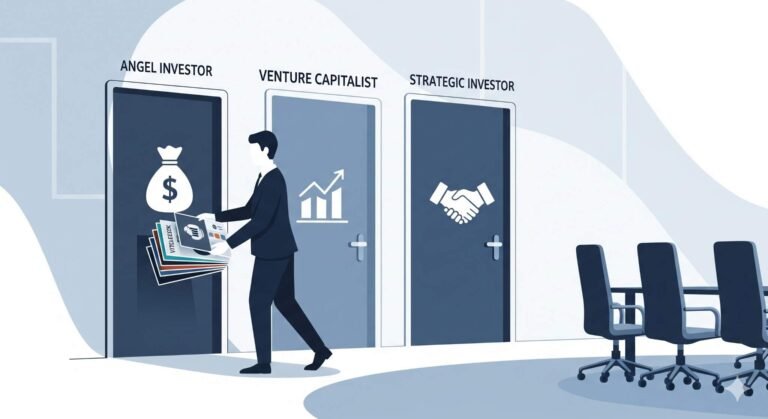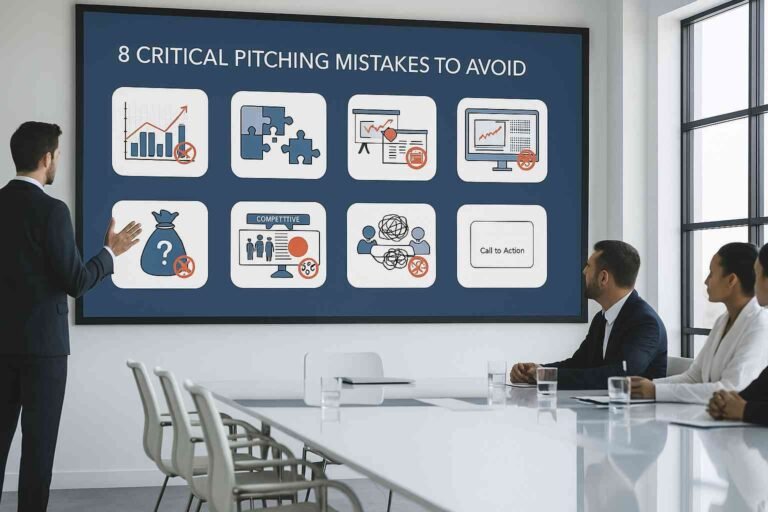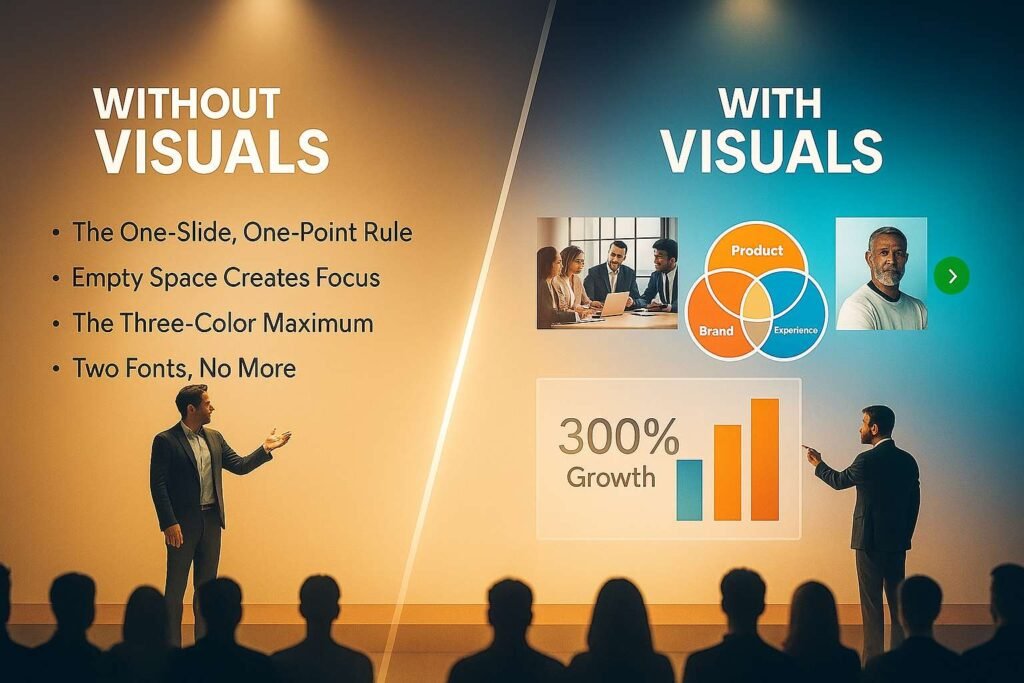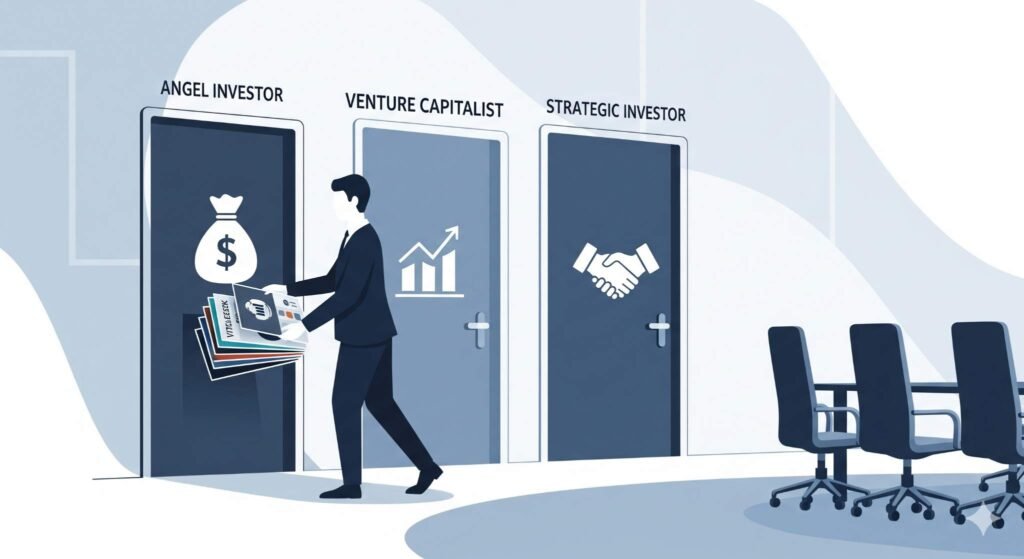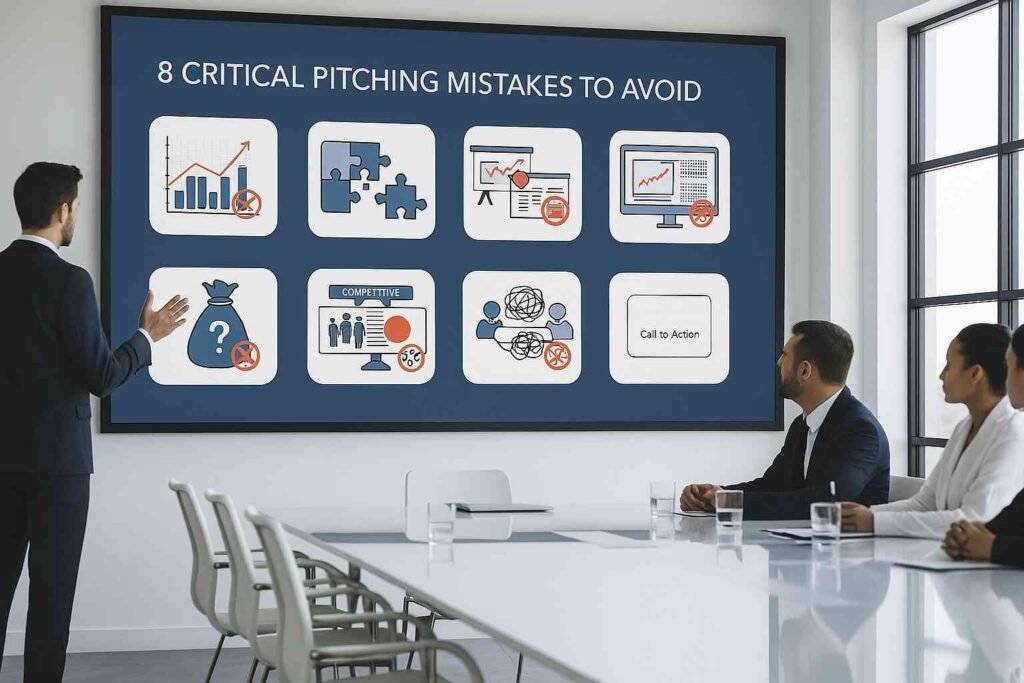Table of Contents
- The Secret Sauce of Startup Success: Why LinkedIn’s Past Matters
- The LinkedIn Story: From Idea to Giant
- Building Blocks: How to Define Your Startup’s Core
- Rule 1: Nail the Problem (Like LinkedIn Did)
- Rule 2: Simplify Your Solution (The LinkedIn Way)
- Showing the Big Picture: Market, Money & Momentum
- Rule 3: Know Your Audience & Market Size (Show, Don’t Just Tell)
- Rule 4: Chart Your Course to Profit (The Business Model)
- The Human Heart: Why Your Team is Everything
- Rule 5: Highlight Your A-Team (Investors Back People)
- Crafting the Message: Making Your Deck Unforgettable
- Rule 6: Be Clear, Be Brief, Be Visual (The Golden Rules)
- Timeless Wisdom for Today’s Founders (Even in the AI Age)
- Your Pitch Deck Moment: Time to Apply These Lessons!
- Quick Answers: Your Pitch Deck FAQs
Imagine being a tiny startup with a big dream: to connect the entire professional world online. That was LinkedIn in 2004. Today, it’s a multi-billion dollar giant, a place where millions find jobs, build networks, and grow their careers. But how did they convince early investors to believe in their vision?
The answer lies in their original pitch deck. This simple document wasn’t just a collection of slides; it was a masterclass in clear communication. It’s a treasure map for today’s founders, showing timeless rules that still lead to startup funding. Forget fleeting trends – LinkedIn’s early pitch deck shows us the true secret sauce: clarity, a real problem, a simple solution, and a compelling vision. Let’s dig into what this legendary presentation can teach you.
1. The LinkedIn Story: From Idea to Giant

Before it became a household name, LinkedIn faced a huge challenge. They weren’t just building a website; they were building a whole new way for professionals to interact. This meant they needed to convince investors that their idea was not only good but also necessary and profitable. Their pitch deck had to do the heavy lifting of painting this future. It laid the groundwork for the massive network we all use today, proving that even big ideas need a clear, well-told story to get off the ground.
2. Building Blocks: How to Define Your Startup’s Core

Every great startup starts by understanding a need and creating something to meet it. LinkedIn’s original pitch deck perfectly showed these core building blocks.
Rule 1: Nail the Problem (Like LinkedIn Did)
LinkedIn didn’t just say, “We have a cool website idea.” They started by pointing out a real problem: professional connections were hard to keep up with. People often lost touch with old co-workers, finding new talent was difficult, and managing a career network was messy. Their pitch deck clearly showed this pain point.
- Your Takeaway: Don’t talk about your product first. Start with the problem your startup fixes. Make it so clear that investors instantly think, “Yes, that’s a real issue!” This hooks them into wanting your solution.
Rule 2: Simplify Your Solution (The LinkedIn Way)
Once the problem was clear, LinkedIn’s pitch deck presented its solution: a single, easy-to-use online platform for professionals. They didn’t overcomplicate it. It was simply the place to manage your professional identity and connections.
- Your Takeaway: Your solution must be simple to grasp. How does your startup directly fix the problem you just showed? Use plain language. Investors need to quickly see how your idea creates value.
3. Showing the Big Picture: Market, Money & Momentum

An idea is one thing, but a business needs a big enough world to grow in and a way to make money. LinkedIn’s pitch deck excelled at this.
Rule 3: Know Your Audience & Market Size (Show, Don’t Just Tell)
LinkedIn showed investors that the market was huge – every professional online could be a user! They proved the potential for massive growth by talking about the millions of people who could use their service.
- Your Takeaway: Don’t just say your market is “big.” Show numbers. Who exactly are your customers? How many of them are there? Investors want to see a clear path to millions of users or dollars. This is your market opportunity.
Rule 4: Chart Your Course to Profit (The Business Model)
Even in its early days, LinkedIn had a clear plan for how it would make money. They showed different ways they would earn revenue, like premium subscriptions and hiring solutions.
- Your Takeaway: Your pitch deck must clearly explain your business model. How will your startup earn money? Is it through sales, subscriptions, ads, or something else? Make your revenue streams easy to understand.
4. The Human Heart: Why Your Team is Everything

Ideas are great, but investors ultimately back people. LinkedIn’s original pitch deck made sure to highlight the strength of its founding team. They had relevant backgrounds, including experience from successful companies like PayPal.
Rule 5: Highlight Your A-Team (Investors Back People)
The LinkedIn founders showed they had the skills and experience to make their big idea a reality. This built trust and confidence in the investors.
- Your Takeaway: Dedicate a slide to your team. Show why your unique group of founders and key members are the absolute best people to solve this problem and build this business. Highlight relevant experience and passion.
5. Crafting the Message: Making Your Deck Unforgettable

A great story needs great telling. LinkedIn’s pitch deck was not a long, boring document. It was a concise, visual presentation that got straight to the point.
Rule 6: Be Clear, Be Brief, Be Visual (The Golden Rules)
They used slides as a guide for their talk, not as a script. Each slide had a clear message, supported by visuals rather than dense text. This respected the investors’ time and made the information easy to remember.
- Your Takeaway:
- Keep it Concise: Use short sentences, strong headlines, and bullet points. Each slide should have one main idea.
- Use Visuals: Charts, graphs, icons, and quality images make your pitch deck engaging. They help tell your story faster than words alone.
- Practice Your Pitch: The deck is a tool for your talk. Practice how you will speak alongside your slides.
Check out our guide on What Are the Best Tools and Templates to Build an Interactive Pitch Deck?
6. Timeless Wisdom for Today’s Founders (Even in the AI Age)

You might wonder if these lessons from 2004 are still true, especially with powerful new AI tools that can draft content and design slides. The answer is a resounding YES.
While AI can be an amazing assistant for founders – helping with outlines, summarizing market data, or even suggesting design layouts – it cannot replace the core human elements that made LinkedIn’s pitch deck successful:
- Your Unique Story: Only you can tell the authentic story of your startup, your passion, and why you are the one to build this business. This is where investors connect emotionally.
- Deep Insight: AI pulls from data, but you have the deep, nuanced understanding of your problem, your customers, and your vision that only comes from experience.
- Trust and Vision: Investors want to see a clear vision and feel trust in the founders. That comes from you, not a machine.
Today’s founders should use AI tools to make their work faster and more polished, but they must always infuse their pitch deck with their unique human story, insights, and strategic thinking. Explore Why Your Slides Still Matter in the Age of AI.
Your Pitch Deck Moment: Time to Apply These Lessons!
LinkedIn’s original pitch deck shows us that a clear, concise, and compelling presentation is truly a startup’s secret weapon. The lessons learned from its early success are not old; they are timeless truths for getting investors excited about your business.
Don’t let your startup’s funding depend on guesswork. Learn from the masters like LinkedIn and craft a pitch deck that truly tells your story and highlights your potential.
Ready to build a pitch deck that shines and convinces investors? Contact our expert investor pitch deck design services! We help founders create powerful pitch decks that get noticed and secure funding.
Quick Answers: Your Pitch Deck FAQs
1. What exactly is a pitch deck?
A pitch deck is a brief presentation (usually 10-20 slides) that startups use to quickly give investors an overview of their business, the problem they solve, their solution, market size, and team, all to raise funding.
2. Why is LinkedIn’s original pitch deck so well-known?
LinkedIn’s original pitch deck is famous because it perfectly captured their vision for a new type of professional network and helped them get the early funding that led to their huge success. It’s often studied as a top example of a clear and effective pitch.
3. How many slides should a pitch deck have?
Most pitch decks work best with 10 to 20 slides. The goal is to be short and clear, keeping investors interested without giving them too much information at once.
4. What are the most important slides in any pitch deck?
The most important slides usually include the Problem, Solution, Market Opportunity, Business Model, Team, and “The Ask” (how much funding you need and what it’s for).
5. Can I just copy LinkedIn’s pitch deck for my startup?
While you can get great ideas and learn a lot from LinkedIn’s pitch deck, it’s always best to use it as inspiration, not a direct copy. Your startup is unique, and your pitch deck should clearly show what makes you special.



